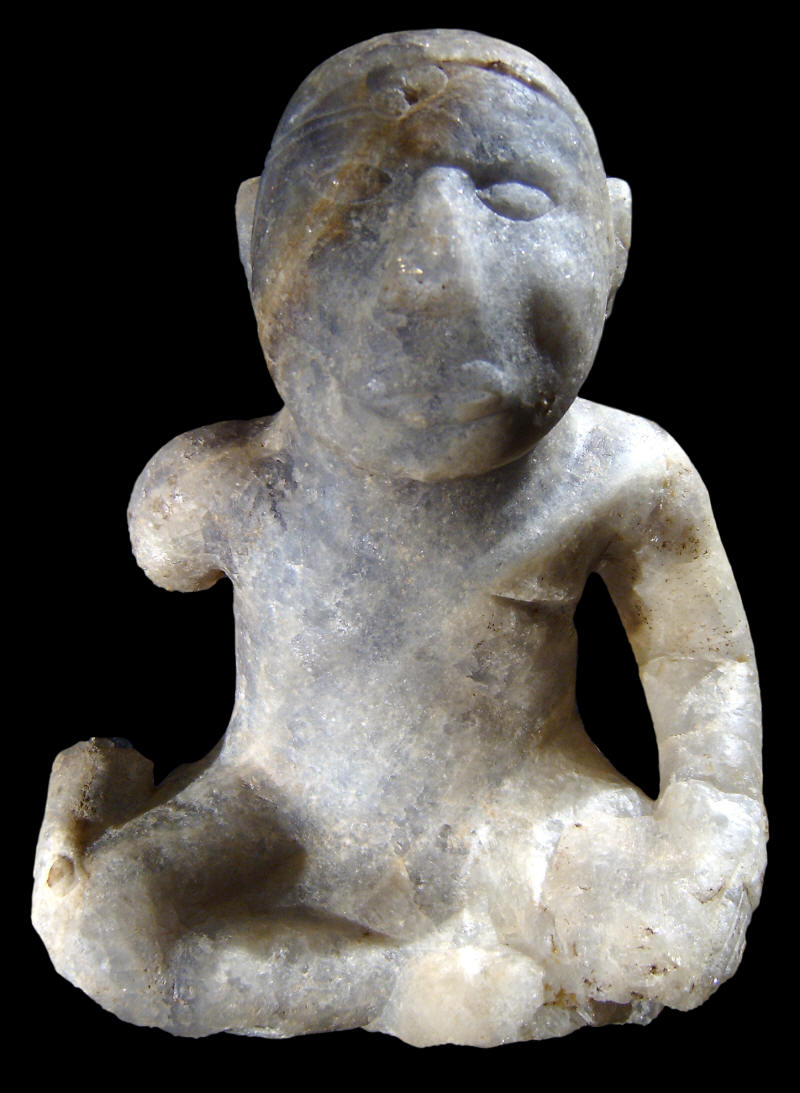|
THE TOLU FLUORITE
STATUE
A.D. 1150 TO 1200
CRITTENDEN COUNTY, KENTUCKY
RETURN TO PAGE 1
COPYRIGHT MAY
31, 2011 PETER A. BOSTROM
The Tolu figure is
the most intricate and realistically carved fluorite statue discovered
to date. The first description of the Tolu statue appears in a
Louisville newspaper article in 1954 called "Solid Old Citizen." The
statue was discovered by Willard Johnson in a cultivated field in
May of that same year on a site located near the south bank of the
Ohio River. The statue had been struck at the upper left chest area
and the left arm was broken away but later restored. The right arm
was missing and never recovered.
The lotus seating position of the Tolu statue is reported by
Smith and Miller to be the most common for male figures although all
three of the other fluorite statues (plus the fourth fire damaged
example from western Tennessee) are seated with the right knee up at
chest level. The Tolu figure is seated in the lotus position with legs
crossed and each hand resting on a knee. Smith and miller report that
the most common female seated position is kneeling with both legs tucked
underneath.
One of the most interesting carvings on the Tolu statue are
the two beads located at the top of the forehead in the center. They are
carved to represent beads attached to two parallel lines that represent
a forelock of hair. The design is described as a Braden-A style of beaded forelock which is
a Cahokia trait. The Tolu fluorite statue is the only known statue that
was sculpted with a beaded forelock.
The Tolu statue is made of multi-colored fluorite. The colors
range from white to blue, purple, yellow and orange. It measures 9 1/4
inches (23.5 cm) high and 7 1/2 inches (19 cm) wide and deep. It weighs
18 pounds.

|
